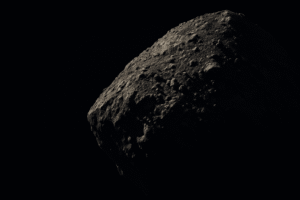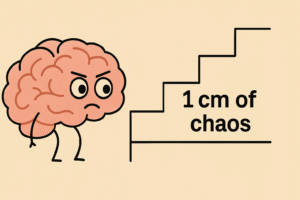Fun fact: The new Bharat Forecast System (BFS) in India slices the country into blocks as small as 6 kilometers (km)—that’s about the size of a large village—and delivers weather predictions for each one. With “Bharat Forecast System: India’s New 6-km Weather Radar to Predict Extremes”, we’re talking about a leap in how India forecasts monsoons, cyclones and heatwaves. But the real question: can it save lives?
What the new system actually does
India’s weather-prediction infrastructure took a major upgrade when the BFS was launched on 26 May 2025. The system, developed by the Indian Institute of Tropical Meteorology (IITM) in Pune under the India Meteorological Department (IMD) and the Ministry of Earth Sciences, offers forecasts at a 6 km-by-6 km grid. Previous systems worked at around 12 km resolution.
On top of that, the system uses the supercomputer Arka with 11.77 petaflops capacity and 33 petabytes of storage at IITM. This advanced tech means faster runs, richer data, and more localized predictions. The BFS also utilizes data from a network of Doppler weather radars (over 40 currently, planned to expand) and uses a Triangular Cubic Octahedral Grid (TCo grid) for better spatial precision.
Why this matters for monsoons, cyclones and heatwaves
Monsoons: India’s monsoon season is notoriously variable in time and space. With a 6 km grid, forecasters can better detect early rainfall breakdowns, localized cloud bursts, and micro-variations in monsoon onset. Farmers, water authorities, and residents stand to gain.
Cyclones: Coastal zones can face devastating cyclone landfalls. If a forecast model can pinpoint storm-path variation within a few towns instead of whole states, evacuations can be smarter and faster.
Heatwaves: Extreme heat events often begin as localized hot-spots before spreading. The BFS promises early warnings for smaller zones—neighbourhoods or panchayats (village councils)—so health systems and vulnerable communities can react.
In one announcement, the BFS was claimed to boost extreme rainfall prediction accuracy by 30 % over previous models. That’s the kind of improvement that can turn “maybe a flood” into “we need to move now”.
Anecdote: When the village knows first
Imagine a village in eastern India, which in the past received a generic state-level forecast: “Rain expected tomorrow”. Using BFS, that village now gets “Heavy rainfall likely between 4–6 pm tomorrow, bringing 60 mm in this 6 km cell”. That difference can shift thatched houses to temporary shelters, shift tractors out of low-lying fields, and shift mothers indoors with children. It’s subtle but crucial.
One local official in a pilot region said: “For the first time, we felt the forecast spoke our village’s language.” That may sound ordinary—but in weather-vulnerable India, it’s not.

Challenges and what to watch
Even a high-resolution model like BFS comes with caveats:
Data and observation gaps: A model is only as good as the input. Radar networks, surface stations and real-time monitoring must scale up; gaps in rural terrain remain a weak link.
Interpretation and dissemination: Getting a 6 km forecast is one thing—making sense of it for end-users (farmers, fisherfolk, urban slums) is another. If the forecast doesn’t reach them in time, it’s wasted.
Budget, maintenance and training: Supercomputers and radar arrays cost money. Keeping the system running, updated, maintained and staffed with trained meteorologists is ongoing.
False confidence: There’s a risk of over-trust. A high-resolution forecast is not perfect. The weather is still chaotic. Communities must respect warning levels and maintain disaster readiness, not assume “we’re covered”.
Climate change pressure: As weather extremes intensify with climate change, even the best models will face new kinds of events. The BFS gives a better chance, but not immunity.
Why it’s a little provocative
Because it challenges the old narrative: that weather forecasting in India is “good enough”. This system says: “No, we need village-level precision.” It forces institutions to shift from broad-stroke warnings to hyperlocal action. It also nudges policymakers: you can’t treat heatwaves or floods as state-wide; they can be neighbourhood-wide.
If we accept a 6 km resolution forecast, the next question becomes: why does my ward not get separate alerts? Why does my farm get only block-level rain warnings? The BFS provokes us to demand more, not settle for less.
Conclusion
The “Bharat Forecast System: India’s New 6-km Weather Radar to Predict Extremes” is more than a technological upgrade—it’s a shift in how India sees weather. From monsoons to cyclones to heatwaves, the BFS gives a granular lens. But the real test lies not in grids or petaflops—it lies in how the forecast translates into early action, community awareness, resilient infrastructure and lives saved.
If your district issues a heatwave alert tomorrow with exact time and duration, or if your panchayat receives a forecast for heavy rain for your village cell, you’ll know the difference. The forecasting future is local, quick, and precise. The question for all of us: will we listen and act? Because when weather extremes strike, knowing them is one thing—but responding is everything.
Author’s Note
I remember days when we waited for a “weather bulletin” to say “rain likely tomorrow”. Now we talk of 6-km grids and supercomputers. Technology has raced ahead—but communities still need to catch up. My hope: this piece nudges you to ask your local authorities how they use this system, how you can benefit, and how your neighbourhood can turn forecasts into action.
G.C., Ecosociosphere contributor.
References and Further Reading
- India launches world’s most precise weather model – Times of India
- India unveils indigenously developed high-resolution forecast system – Meteorological Technology International
- What is the Bharat Forecast System? – PMF IAS
- BFS boosts extreme rainfall prediction accuracy by 30% – DD News
- India to unveil BFS, world’s most precise weather model – The New Indian Express





Comments
Nice blog here Also your site loads up fast What host are you using Can I get your affiliate link to your host I wish my web site loaded up as quickly as yours lol